Hello sweet friends! Happy Fashion Friday. Over the past few years, many lovely souls have commented that I should be sewing for television. I am always deeply touched but am well aware that there are many, many other amazing seamstresses who are far superior for such a job. But when asked, I couldn’t say “No.” So I have been Sewing A Laura Ingalls Pioneer Dress for television.
Schoolteacher Eliza Mott and students in Carson Valley, Nevada.
Hold On To Your Bonnets
Today’s post, along with the next two Fashion Fridays, will be devoted to Little House clothing.
The post and video set for Friday, January 29th has been years in the making. (Quite literally.)
If you follow me on Instagram from time to time you have been given a few sneak peeks.
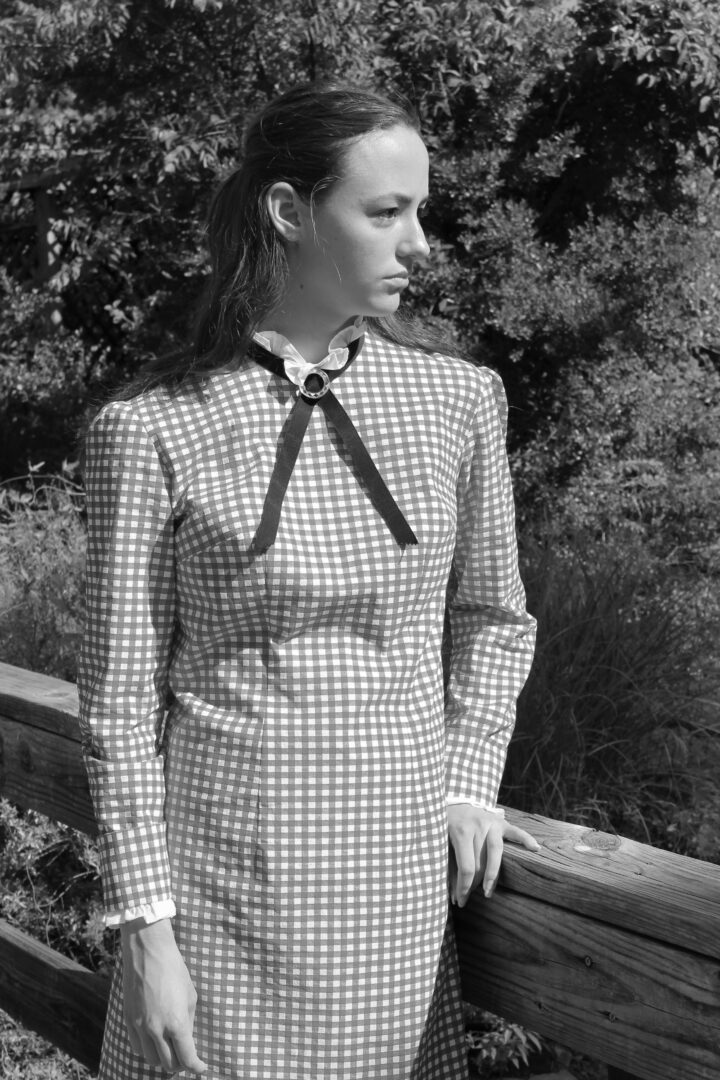
Carrie, Mary, and Laura Ingalls, circa 1879–1881
Courtesy of the Laura Ingalls Wilder Historic Home and Museum
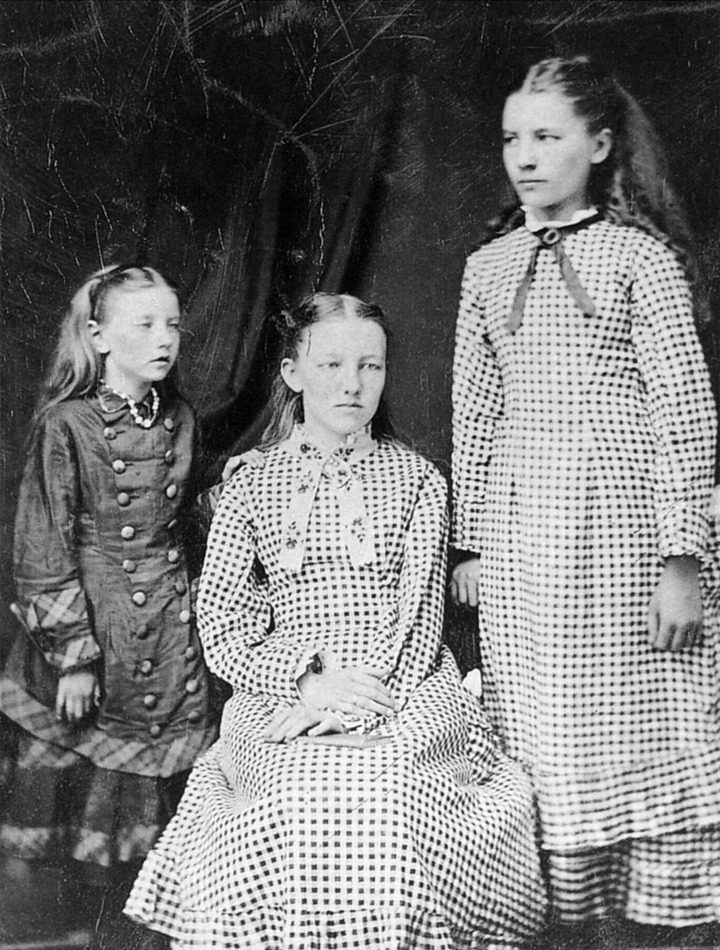
Sewing A Laura Ingalls Pioneer Dress
Jason and Paula Wilder had need of such a dress for their darling daughter, Joanna. Paula selected McCalls pattern M7231.

Country Cosplay Is FUN!
I want to begin by saying that costuming should be fun! I believe that all types of costuming should be welcomed, appreciated, and celebrated! Many Little House fans love to wear garments that perhaps aren’t historically accurate in terms of design, fabric, or finishing choices. I am here to say that is OK! Whether it is a choice due to finances, comfort, or you just think it is cute you should wear what makes you happy. There is currently an entire movement devoted to cottage living #cottagecore as well as a call to wear pioneer-style dresses with the #targetdresschallenge.

Inquiring Minds Want To Know
For me personally, when I am in a position of teaching I try to be as historically accurate as I can be. If I am speaking at a Little House themed event or working at a historical site I try to represent how people actually dressed in Laura’s time. This means I begin by wearing full, period-correct undergarments. First is a chemise, then stockings, shoes, a corset, petticoat(s), and other enhancements such as padding, hoops, or lobster tails. (Yep, that’s actually a thing.)
When I am giving a presentation I often bring extant (antique) examples of what I’m wearing under my outer garments. If I have learned one thing it is that kids LOVE talking about underwear. (Smile.) Who am I kidding? Adults do too.
When it comes to the outer garments I spend MONTHS, sometimes years, researching a particular look before I even begin sewing one stitch.
This look is from the Natural Form Era 1877-1882. (Click on the highlighted words to view the post.)
Never Stop Learning
The look below is from the Late Bustle Era. The overskirt is specifically 1883.
I actually started the research for this ensemble in 2018. If you read this later post you will learn that even two years later I am still not satisfied with this look.
But I will try and try again until I get it right.
This is probably a good time to remind everyone that I do not possess a degree in academic dress, textile, or historic fashion design. (If you’re curious, I’ve earned a degree in interior design and an interdisciplinary degree in art history and American history with a focus on women.)
My hobby simply boils down to being a history nerd who sews. I am primarily self-taught. It is a great joy for me to be constantly learning and to share what I have learned with others.
It should be noted that I am also always open to constructive criticism if it results in learning something valuable.
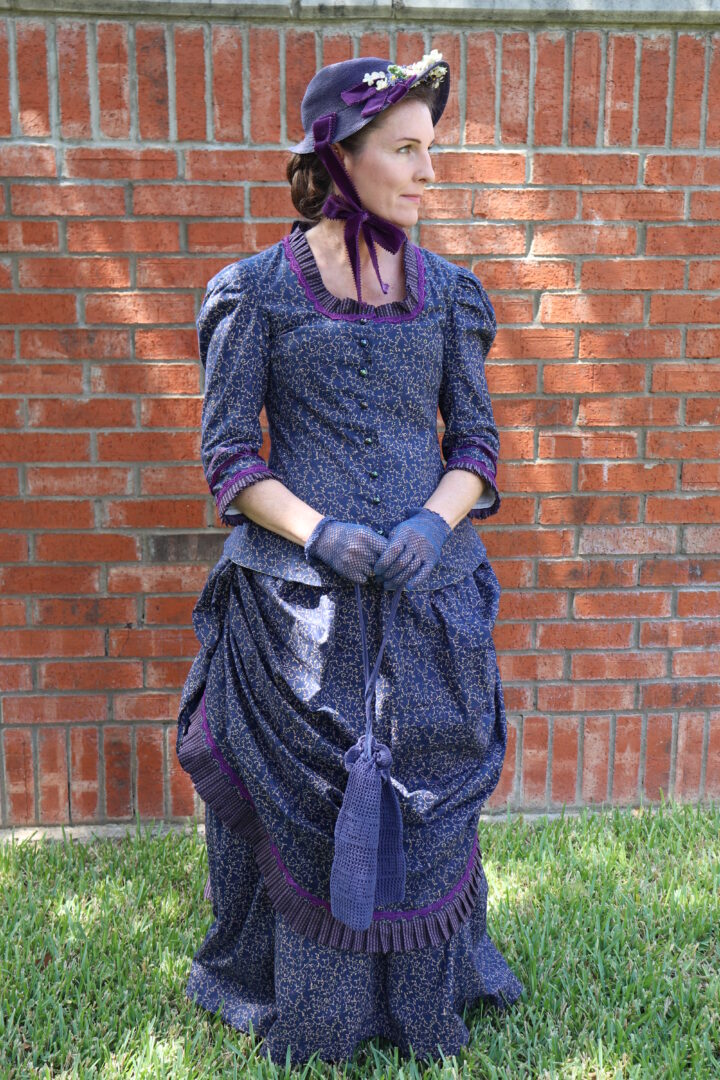
Historical Research
So. back to the Girls Pioneer Dress Pattern. This pattern is well-loved by many. It is absolutely darling. I found no fault with the construction process. A beginner could sew it with a bit of assistance.
If you would like a more historically accurate dress a few simple changes can be made to have it be more like a dress that the real Laura Ingalls would have worn.
The style of the girls’ dress shown on the pattern is very close to the Mother Hubbard dress style made popular in the mid to late 1800s.
If you would like to dig a bit deeper into the Mother Hubbard dress origins, etc. there is an excellent academic article: Searching for Mother Hubbard: Function and Fashion in Nineteenth-Century Dress, written by Sally Helvenston Gray.

I have written a bit about this style previously when I shared my 1890s Dressing Gown Wrapper.
Below is an extant dress. It is a blue cotton calico Mother Hubbard dress that was worn by Elizabeth Hinterleiter Keesacker. She was a Virginia native who moved to St. Louis in the 1800s.
Photo courtesy of the Missouri Historical Society, St. Louis
Hallmarks Of Design
The basic dress design features an unfitted bodice/skirt. The upper fabric was gathered to fit the yoke. It generally has a jewel neckline (rounded, without a collar) or a band collar (the low standing collar that encircles the neck without a full turndown).
Mother Hubbard dress with band collar, blue calico print, circa the late 1800s. Image courtesy of HCTM at Kansas State
In Laura’s day, it was not uncommon for girls to dress in a similar style to what women were wearing. Artist Kate Greenaway illustrated several books in the 1880s which often featured children wearing similarly styled smock dresses.

Elastic is fantastic but…
Two simple changes can make the pattern dress more historically accurate:
- Eliminate the large Peter Pan collar.
- Do not add the extra shoulder sleeve ruffles.
Bonus! You will also save yourself 1/4 yard of fabric by doing this.
I chose to also narrow the voluminous sleeve design considerably. The pattern calls for the excess sleeve fabric to be gathered at the wrist with elastic. This would not have been done in the 1870s/1880s. A pioneer dress would have a simple straight sleeve or be gently gathered into a cuff. (You can review the examples shown above.)
Thomas Hancock patented elastic fastenings for gloves, suspenders, shoes, and stockings in 1820. However, the elastic band that most closely resembles what we use in clothing today has only been around since the 1920s.
If you would like to go down the elastic academic rabbit hole, start here:
- Natural Rubber and the Synthetics by Peter William Allen
- Rubber Technology by Maurice Morton
Below are a pair of dainty ‘elastic’ sided boots which were given to Queen Victoria in 1837.
Should I Just Zip-It?
This particular girl’s dress pattern features a button closure which is absolutely perfect.
However, there are many “Pioneer Dress” patterns that feature a zipper.
Laura would not have worn a zipper closure during her childhood. I share why as well as the dress construction, new sleeve design, and additional pioneer clothing details in this week’s video.
With this post, along with the accompanying video, I hope you have learned just a little more about what Laura perhaps would have worn.
Much love from a handstitched heart,
Laura
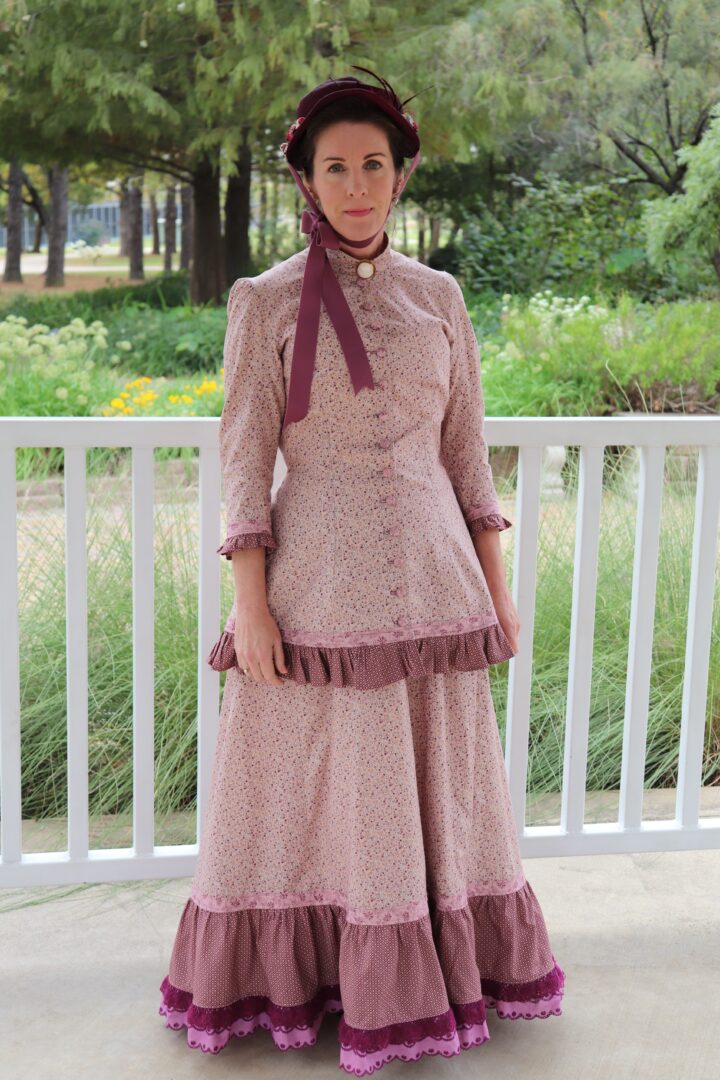
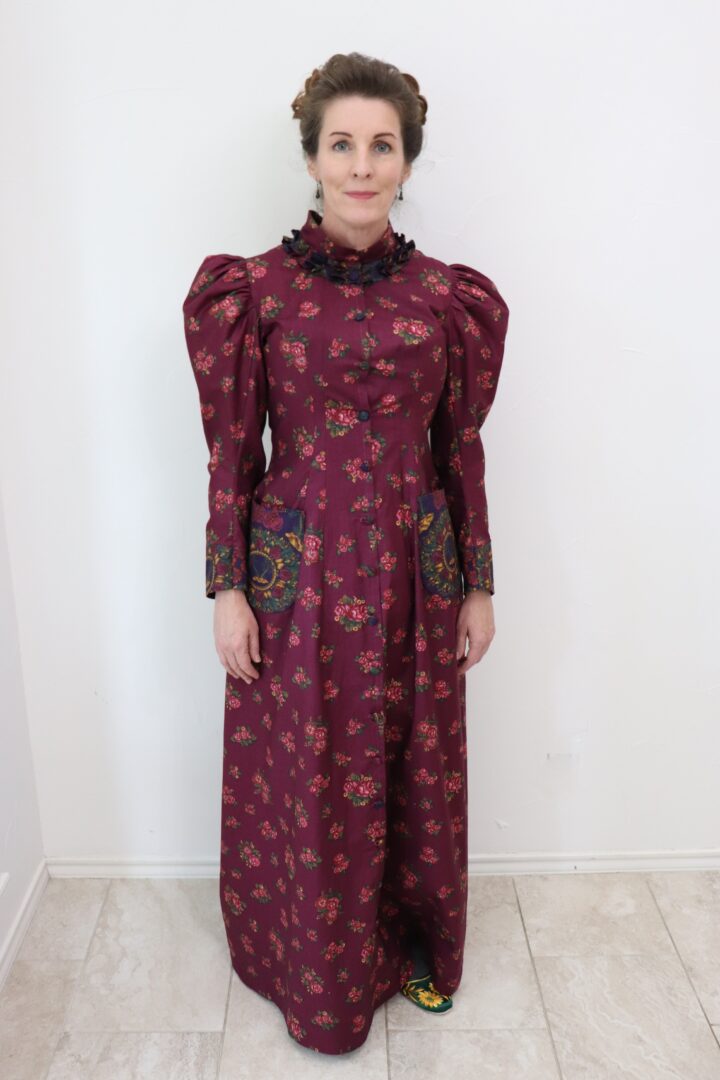
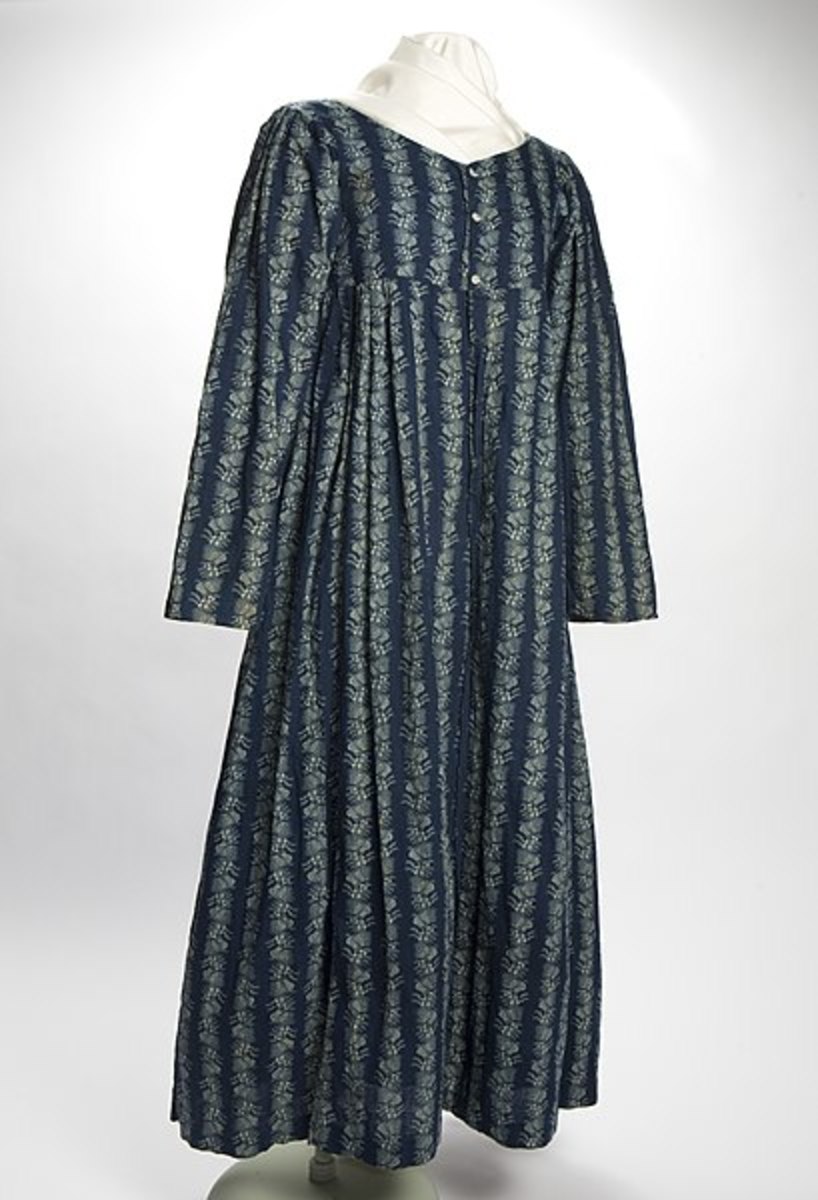

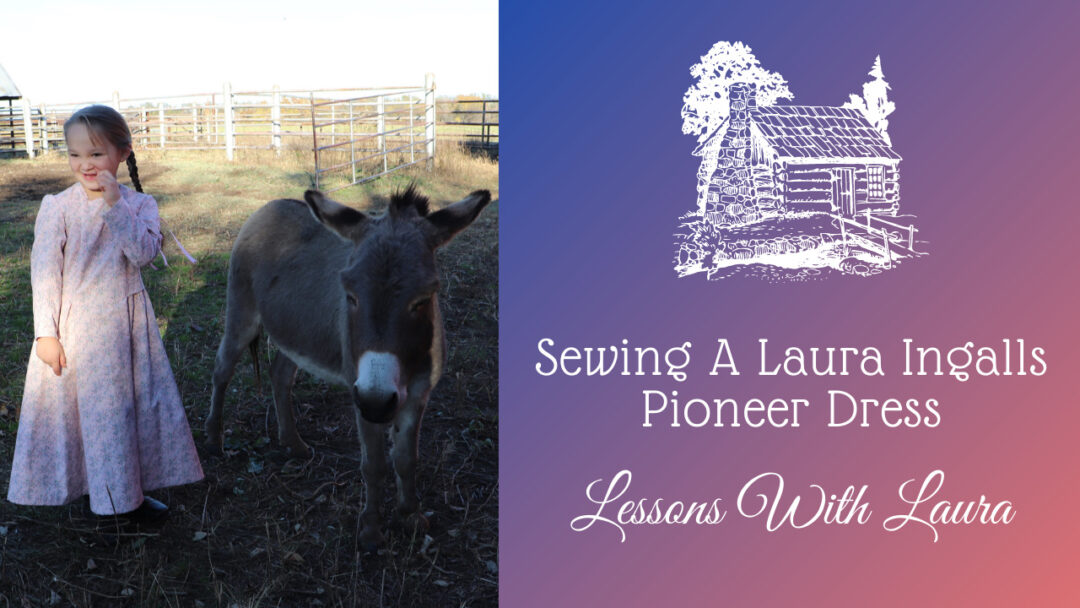
You always amaze me with how much you research a subject. Your sewing ability is unreal, love all of your creations and the history behind them.
Such a fun read. Love the dresses.
d
A really great article. You have provided information from an inclusive perspective – explaining the thinking and evidence behind a historically accurate approach while not excluding those who may not have the skills, desire or finances to engage at this level.